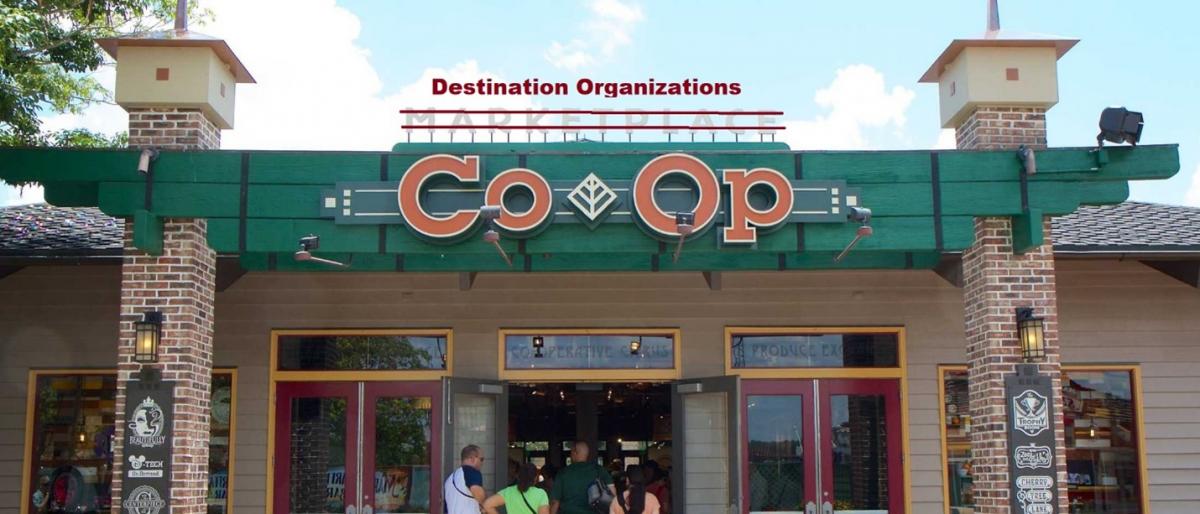by: Andreas Weissenborn, Destinations International
Creating a more equitable economic system by identifying lessons from other ownership structures to better scale, invest, and promote our communities.
The magic destination funding bullet our sector has looked for might not be a brand-new funding method but maybe a reimagining of an existing model that has worked for other industries that we could adopt. Our history has proven that funding for some might not be applicable to all and our communities we represent might ultimately dictate which succeed or fail. One benefit of the pandemic is the acceleration we’re experiencing and its ability for us to try new things including new or different funding and organization structures. Similar to us looking how venture capital funding could work for us, let’s explore a community co-op.
First, co-ops have existed for a over a century and deserve exploring for lessons and structures to copy. The idea that this has not been done is not surprising given that it was not until 2019 in St. Louis that we started the conversation of talking about ourselves as a community shared value. My guess is that we have not considered co-ops much before because of the misconceptions surrounding what co-ops are. What if the next community funding benefit model is actually a structure based on the shared ownership or equity funding model of a co-op? Just for fun, let us try and tackle what this might mean.

Concept
For a starting point to the conversation, some 89% of individuals cannot correct identify or define what a co-op is “Co-op” refers to a cooperatively owned business. Co-ops are privately owned businesses that are owned and controlled by the people who directly use its products, supplies or services. Cooperative ownership, by its nature, shares profits and corporate governance with the people who directly support that business, from staff to customers and in between. Co-ops can exist in any sector, and at any level of the supply chain. They, quite frankly, can be made to fit for any size organization.
Values
To connect this potential funding model back to our beliefs and values, I greatly enjoy the definition defined by Cooperatives for a Better World stating:
“A cooperative is a values-based business, owned by and operated for the benefit of the people at the heart of the organization, not outside investors. Cooperatives are structured around seven principles deeply rooted in democracy, economic participation, and sustainable growth of both the businesses and communities they serve.”
These basic principle of a co-op - a values-based business, owned and operated for the benefit of the people that make it up – is not that far from a destination organization’s basic principles.
Motivation
Many sectors of business use the co-op model. While most are associated with agriculture or food (shout out to Cabot creamery!), they can also be found across housing, insurance, social services, financial institutions, unions and utilities. What really sets these types of co-ops apart is everyone who owns a co-op has a need for the products and services offered.
The motivation is utilitarian, not for financial gain.
These sound a lot like the cornerstone of destination promotion. Our sector represents organizations or businesses that offer services or products which provide promotion, placemaking, access and visitation for a destination. We help a community invest in itself and its residents to brining maximum value to its community and not its shareholders.
A few other things to consider:
- Board Diversity | Co-ops allow for more stakeholders to be represented at the board table, which would be a much-improved community alignment we need that is still largely governed by our suppliers (hotels and restaurants). In a post pandemic world, this is our rallying crying to make our sector a more equitable and inviting one for all.
- Revenue Dispersal | Co-ops' most unique characteristic trait is how the co-op disperses revenue. A co-op has the ability to set the allocation based upon the needs of its members and not the shareholders. This attribute would allow a destination organization to allow flexibility on how its revenues or profits could be shared, not excluding just reinvesting into itself, but it could tackle other issues surrounding affordable housing, infrastructure, or other community needs.
One of the largest hurdles of a beginning co-op is access to financing, which can often become a deterrent for a new co-op from starting. Let us try and change that and give some examples on how we might start the first destination co-op (DCOOP).
To start funding a DCOOP we must set the expectations on what this will bring back to its members. Unlike our traditional funding models deployed in our sector, which are procured public money that gets invested towards common goods (infrastructure, education, destination promotion) to produce economic development, a DCOOP will function to produce a profit which would then be at the members direction on how to allocate. Members then could be anyone from the community served, be it government agency, hospitality supplier, entrepreneur, or citizen. Each potential member would then have to contribute financially and share fiduciary responsibility to be a member.
Each DCOOP can set the waypoints on what those contributions (and profits) should be set to but some of the work we outlined a year ago with the community benefit model could serve as a blueprint. Communities should expect more contributions from those who benefit the most from destination promotion but would still share equity on how the ROI is dispersed. Maybe the next normal for a destination organization is not exactly a new form of funding but rather a reimagination of how it is owned to begin with?

